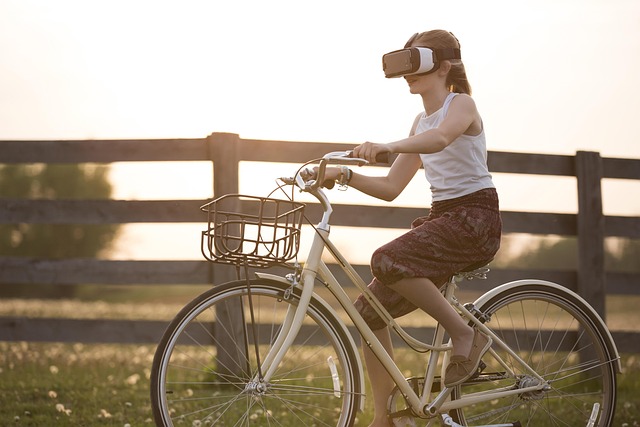In the evolving landscape of digital innovation, the concepts of virtual reality, augmented reality, and the metaverse are reshaping how developers design, build, and deliver immersive software experiences. As these technologies mature, they are becoming central to new forms of interaction, collaboration, and entertainment. Understanding the software foundations that enable these environments—hardware drivers, rendering engines, networking protocols, and user interface frameworks—provides insight into what it takes to create compelling, scalable virtual worlds.
Foundations of Virtual Reality Software
Virtual reality hinges on the seamless synthesis of visual, auditory, and haptic cues that convince the brain of a presence in a fabricated space. From a software standpoint, this involves several tightly coupled components. First, low‑level device drivers translate sensor data from head‑mounted displays into screen space. Next, rendering engines compute stereoscopic images in real time, often employing techniques such as temporal anti‑aliasing and foveated rendering to meet the high frame‑rate demands. Finally, input handling subsystems map motion controllers and eye‑tracking data into virtual actions. These layers must all operate within milliseconds to avoid motion sickness, a key quality metric for VR applications.
- Graphics pipelines: DirectX 12, Vulkan, Metal.
- Spatial audio frameworks: OpenAL, FMOD, Oculus Audio SDK.
- Motion tracking: Leap Motion, HTC Vive Trackers, INS (Inertial Navigation Systems).
Augmented Reality Integration
Augmented reality extends the physical world with virtual overlays, blending real‑time camera feeds with computer‑generated content. Software for AR must reconcile sensor noise, varying lighting conditions, and device capabilities. Core challenges include robust pose estimation, which often relies on SLAM (Simultaneous Localization and Mapping) algorithms, and dynamic occlusion handling, where virtual objects must be hidden behind real‑world geometry. Successful AR applications also consider the user’s context, adapting interface density and interaction metaphors to avoid visual clutter.
“Augmented reality is not about replacing reality; it’s about augmenting it with meaningful digital information.” – Industry Analyst
Building the Metaverse: Architectural Overview
The metaverse can be viewed as a persistent, shared 3D environment that allows users to interact across virtual spaces and services. Software architects are tasked with creating a modular, interoperable stack that supports user identity, content creation, asset streaming, and real‑time networking. Key layers include:
- Identity & Authorization – Decentralized identifiers (DIDs) and blockchain‑based asset ownership.
- Spatial Partitioning – Chunking large worlds into regions that can be streamed independently.
- Physics & Interaction – Consistent simulation across client and server to preserve fairness.
- Economic Engine – In‑world currencies, smart contracts, and marketplace APIs.
These components must cooperate with VR and AR subsystems, providing a unified user experience whether the participant is fully immersed or merely looking through a smartphone camera.
Software Frameworks and Toolchains
Several open‑source and commercial frameworks are shaping the development of immersive experiences. Unity and Unreal Engine dominate the gaming sphere, offering built‑in VR/AR support and a rich ecosystem of plugins. For more experimental or cross‑platform ventures, the open‑standard WebXR API allows developers to target web browsers with minimal deployment overhead. Cloud services such as AWS Sumerian and Microsoft Azure Spatial Anchors provide managed backend infrastructure for real‑time collaboration and persistent world state.
Challenges in Immersive Software Development
While the promise of virtual reality is high, developers face significant hurdles. Performance is paramount: a lag of even 20 milliseconds can break immersion and induce discomfort. Latency must be addressed at every layer—from input polling to network propagation. Additionally, designing intuitive interaction models that translate naturally from the physical world to a virtual environment requires careful human‑computer interaction research.
Security and privacy also rise to the forefront. Immersive platforms capture sensitive biometric data, including eye movements and gait patterns. Protecting this information, ensuring compliance with regulations such as GDPR, and building user trust are essential for widespread adoption.
Accessibility and Inclusion
Creating immersive software that accommodates users with diverse needs is both a moral and commercial imperative. Developers must provide alternative input modalities, such as voice control or eye‑tracking, for users who cannot use traditional motion controllers. Additionally, visual cues, adjustable text sizes, and audio descriptions help make VR/AR experiences accessible to individuals with visual or hearing impairments.
Future Trends in Virtual Reality Software
Looking ahead, several trajectories will shape the next wave of immersive technology:
- Edge Computing – Offloading rendering and physics calculations to edge nodes reduces latency and expands device compatibility.
- AI‑Driven Content – Generative models can populate worlds with realistic NPCs, dialogue, and procedural environments, lowering development costs.
- Cross‑Modal Interoperability – Standards that allow assets to move seamlessly between VR, AR, and traditional 2D interfaces will encourage broader content ecosystems.
- Persistent Social Platforms – The metaverse will increasingly host social hubs, marketplaces, and collaborative workspaces that mirror real‑world interactions.
Developers who invest in adaptable, modular codebases will be best positioned to navigate this evolving landscape.
Conclusion
Virtual reality, augmented reality, and the metaverse are converging to redefine how software interacts with users. At their core, these technologies demand sophisticated software stacks that handle rendering, spatial awareness, networking, and user interaction with millisecond precision. While challenges in performance, security, and accessibility remain, the rapid evolution of frameworks, hardware, and cloud services is lowering barriers to entry. As the industry continues to mature, the most successful software will be that which seamlessly blends physical reality with digital augmentation, delivering immersive experiences that are both engaging and inclusive.




